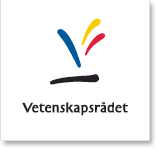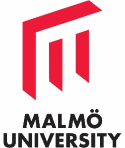BLOG Digitizing the Past for Cultural Heritage Research, Education, and Public Consumption
by Sara Ellis Nilsson, Linnaeus University and Lund University
For the past month, the blog series DigHist – Perspectives on Digital History has explored numerous facets of the ontology of the digital, in particular related to the study of the past.[1] The blog posts have discussed a number of issues related to communication, research techniques, new ways of thinking, and the creation of new tools. The following blog will continue the focus on sources and the digital while also taking into account the communication and use of history. Using a number of examples of digitization for cultural heritage research, education, and public consumption, it will briefly explore questions of ontology; the consequences that digital technology has for research and education; and the ways in which history-related subjects have changed due to new technology, especially in terms of access to source material.
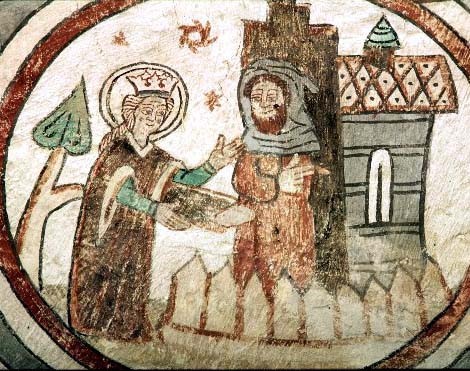
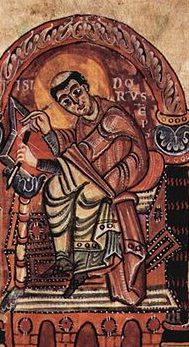
St Catherine of Alexandria, Patron saint of students (among other things!) and St Isidore of Seville, Patron saint of computers and the internet [2]
Questions of ontology
As a relatively new field, the discussion of creating an ontology (or ontologies) of digital history is an important one. As might be evident for those familiar with the field, the term ‘ontology’ can be defined in several ways – a confusing prospect when merging the digital and the humanities. For instance, one common descriptor of ‘ontology’ in media studies concerns the structure of digital media. For computer science, an ‘ontology’ defines representational properties with which to model a domain of knowledge. In the humanities, ‘ontology’ refers to the study of the state of being or becoming. Thus, a need has arisen to clarify just what is the intended connotation.
In response to what they saw as a similar need to discuss ‘ontological questions’ but without ‘making universal claims’, anthropologists Hannah Knox and Antoina Walford contributed to an ongoing discussion about questions of ontologies within anthropology in their 2016-article, “Is There an Ontology to the Digital?- Cultural Anthropology”. In this introduction, they present a number of ways that ideas about ontology and its definition have been discussed in the humanities and social sciences. They also introduce two overarching approaches to the use of the term ‘ontology’.
Of these two, Knox and Walford’s second definition of ontology is the one which is the most relevant to our discussions of digital history – at least those related to the individual projects or overarching discussions of the ‘digital turn’ that we have engaged in here. In this definition, they focus on questions of methodology. According to this definition, researchers need to recognize how digital technology(-ies) change (or ‘disrupt) current ways of researching history.[3] This process is nothing new, but there is a need to consciously acknowledge how the digital is changing and shaping the relationship(s) between theory, sources, practices (e.g. public history), and understandings of the past (e.g. cultural heritage).
In addition to the potential of using digital tools in research, it is important to be aware of their potential for ‘disruption’. Of course, just as there are numerous ways of defining ‘ontology’, there are numerous approaches even within questions of disruption. It would perhaps be better to talk about ontologies. In the following, I will be exploring these ideas via a number of examples related to digital technology in education (including museum pedagogy) and in research.
Digital Technology in education and museum pedagogy
In order to best approach these issues of methodology, researchers, educators, and students need to acknowledge and be aware of the influence that digital sources have on research results.[4] What are the new opportunities to be discovered/uncovered for cooperation and collaboration with the aid of technology? These can be found in both education and research.
As Nygren’s study from 2015 indicates, using traditional archives or digital sources (e.g. in databases) seems to affect how students approach the way they write history.[5] Traditional archives inspire the use of qualitative methods, historical empathy, and the application of different theoretical perspectives, while digital sources lead to the use of quantitative methods and what is termed a “social scientific approach”.[6] Thus, it is important to be aware of how digital versus analogue sources can influence teaching methods and outputs. Teachers can inadvertently be introducing a bias when only exposing their students to one source category (i.e. digital or analogue). Instead, as Nygren argues, the fact that history can be seen as belonging to both the humanities and the social sciences should be acknowledged and acted upon. In this case, that of education, new opportunities abound in the use of digital sources – not just restricted to quantitative methods. For instance, digital access to restricted manuscripts can open up a new world of access to the past that was previously not available to undergrads.
As for how the digital turn has affected museum pedagogy, the use of digital techniques has a long history in museum displays that can be better read elsewhere. In this case, I will focus on some examples of past and future approaches to historical objects and texts, and the way in which the digital has influenced how museums and educators can work with material culture. The following includes an audio-visual element to illustrate the examples that are given.
Firstly, the staff of Turku Castle in Finland made this creative ‘instructional’ video which highlights a traditional approach to objects:[7]
As is clear from this short clip, objects (or texts) are only for the experts. Museum visitors may not touch – anything! This traditional approach only activates sight and/or sound, leaving out the other senses – and especially touch.
Digital technology comes with the promise of change. The increase in the development of VR and AR – and the idea that history can be ‘brought to life’ – is a good indication that museums are interested in engaging with new technology and finding new methods of educating their visitors. Even in this case, however, it is important to mention Knox and Walford’s argument that digital technologies disrupt our relations with source material.[8] In essence, they create new source material, while encouraging the … to believe that they are experiencing an ‘authentic past’ or handling the ‘real object’. The latter experience can be enabled via new digital technologies.
Another example of new technology influencing the ways in which we engage with material culture is found in 3D-printed material. The development and use of 3D-printers has led to the scanning of historical objects and artefacts and the subsequent digital creations of new objects. Unlike the previous example, these objects are okay to touch and allow museum visitors to engage with, what are perceived to be, historical objects also using their sense of touch.
The example that I have chosen here is from Birmingham City University and the lab that is working on the Staffordshire Hoard. The use of 3D-printing allows for new interpretations and engagement with the material, both for museum visitors but also for researchers. These uses of new technology affect the methods that can be used for encouraging tactile engagement with the material. Once again, a new object has been created that is both a replica of an artefact and a new object in itself.
Some of the reproductions, and discussion of how researchers themselves engage with the material in different ways, can be found here:
The 3D-printing of objects is something with which Uppåkra Archaeology Centre in Sweden has also been working. There are a number of ways in which they have used 3D-printed objects. One example is directly linked to their archaeology school for local elementary pupils. As part of their tour, the pupils learn how to conduct an archaeological dig. By using 3D-printed objects discovered at this extensive archaeological site the pupils can ‘discover’ one of the objects associated with the site.[9] Of course, the real finds are safely kept in storage, or are on display at the history museum in Lund. 3D-replicas allow for flexibility and enable this form of pedagogy. Nonetheless, as above, it is important not to place too much emphasis on the object as being the ‘real deal’. It is both a replica, and an entirely new object, which together influence the visitors’ understanding of the past.
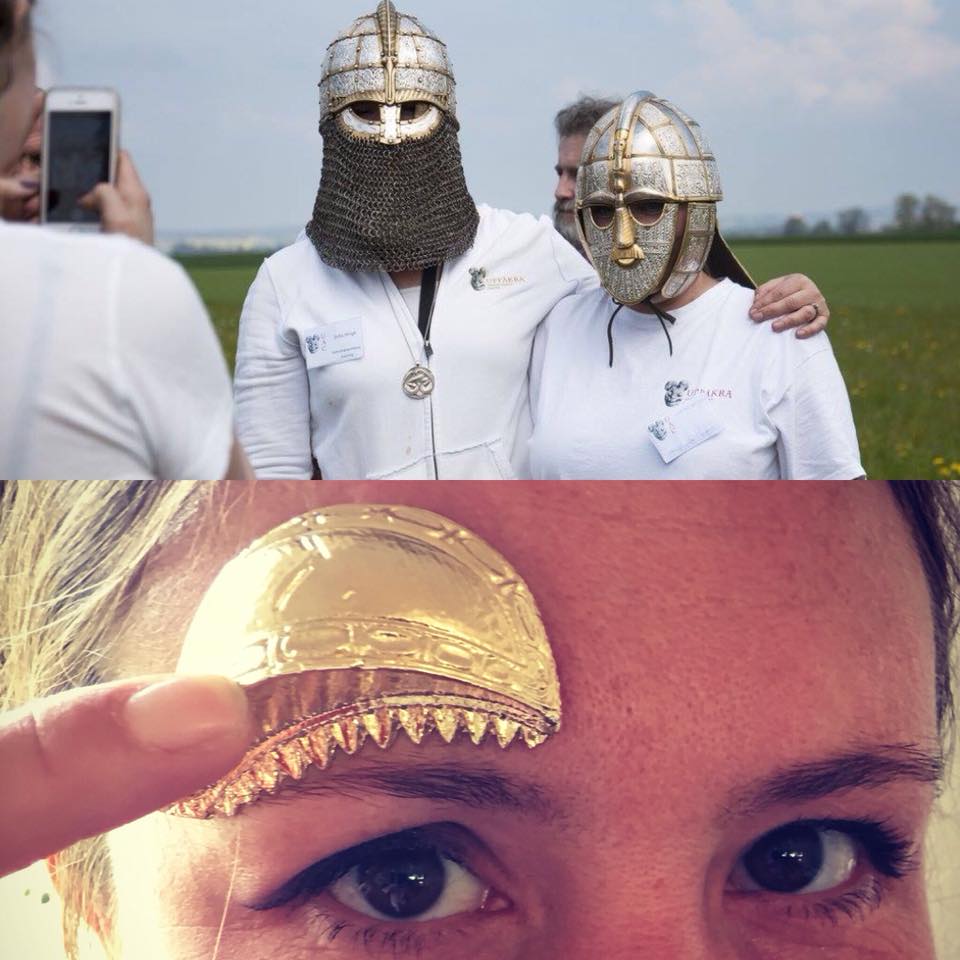
Uppåkra Archaeology Centre: 3D-printed eye brow decoration
There are also a number of initiatives being undertaken to enable scholars to engage with the digital. For instance, there are the digital humanities centres or labs at some, if not most, universities. Those that do have centres are often involved in national and international initiatives to coordinate and enable long-term sustainability.[10] They provide support for the use of infrastructure and for the use of digital technology to aid learning and research. The majority of digitization work, however, is undertaken by cultural heritage institutions.
Source material – for whom?
The above discussion directly ties directly in to a point that Knox and Walford also make: We need to realize that digitized sources are not just copies of real (i.e. analogue) sources but new sources in their own right, i.e. they are also distinct.[11] Similar points have also been made by others in relation to the need for source criticism, open access, and its ‘democratizing’ effects.[12]
A recent overview of digital resources related to studying the middle ages, discusses the online sources, analytical tools, and ‘possibilities’ for the digital humanities in relation to medieval studies.[13] Some of these sources are made available by institutions such as the British Library’s Digitised Manuscripts project which has digitized hundreds of manuscripts from their collections. Digitizing these collections allows them to be used by scholars and students globally; however, it removes the researcher from experiencing the book as it was iintended to be used.
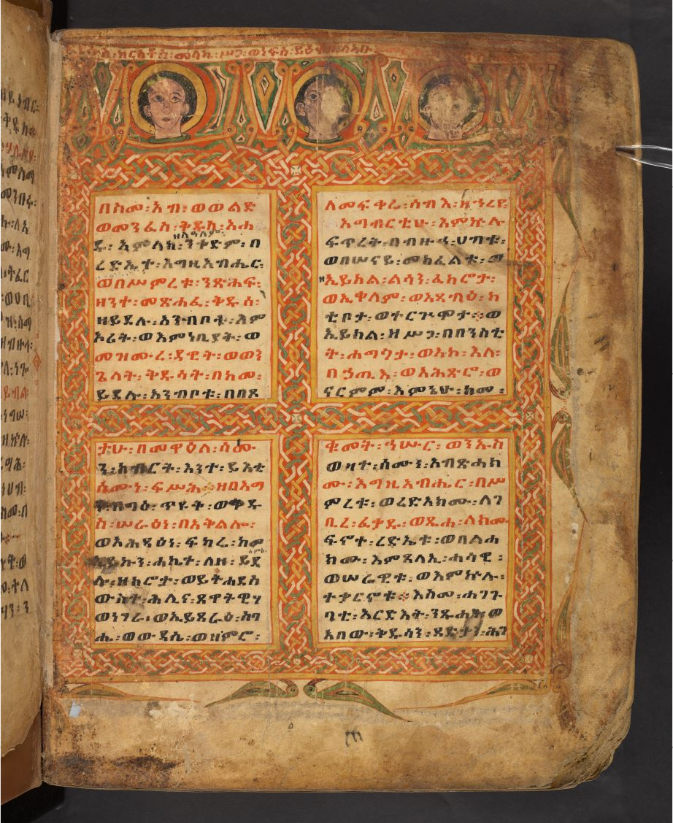
One of many examples: BL Or 597 Ethiopian Manuscript from the 14th-15th century
In these cases we must keep in mind that these electronically produced sources are a new source in their own right, versus their formerly analogue (in some cases a ‘copy’) state. There are a plethora of sources made available, new sources being created every second. That means that it can be hard to get an overview. However, it also provides an advantage to research and study. It has changed the way we do research, as it is easier to work with large quantities of data using digital methods. At the same time, access to other, more fragile sources improves, providing new ways of interpreting and reassessing sources.
As Nygren et al. have written, this open access might lead to low-priority subjects getting more attention or minority groups voices being allowed to be heard.[14] These advantages are of course contingent on the sources actually being chosen for digitization. There are still competing interests in this area.
With an unprecedented increase in open access, the interested public is also able to utilize, or at least peruse, historical sources to a greater extent. This has clear advantages in allowing the public to learn more about history and its sources. It provides benefits as it encourages feelings of connectedness to the past – to texts and objects. These emotions and connections could also be stimulated by museums, but the accessibility is key here. All that is needed in a computer. However, despite the possibilities, there are public versus academic approaches and the interpretations may vary leading to conflicts and questioning of academic analyses.
Finally, in this discussion of ontologies as related to methodologies of interpretation, I would like to mention a new project which will be creating a database and mapping medieval lived religion through the cults of saints in Sweden and Finland.[15] This project is related to ontologies in that it addresses the future use and preservation of sources, as well as their international accessibility. It is important, within the project, to acknowledge the influence digital resources will have on the research results. This awareness has resulted in the creation of a central research question around which the database will be built.
The database creation and subsequent visualizations are based on the research questions focussing on ‘lived religion’ and how this is reflected in the cults of saints from the foundation of the Swedish archbishopric to through to the Reformation period. In addition, cooperating with cultural heritage institutions is also key to the project – one of the steps in bridging the gap and encouraging collaboration between academia and cultural heritage institutions. In some cases, new collections will be digitized. Thus, the project enables digitization within the institutions, while also engaging in new research. Matters of stability and long-term accessibility also on a digital level are being addressed. For instance, one of the main questions concerns how a research project can be transformed into a long-term resource.
This longevity is especially important when taking into account the project’s use of academic crowdsourcing. That is, academics will share their knowledge and previous results in order to keep the database reliable and updated. They do this knowing that they will be acknowledged; giving credit is an important part of the process. In addition to research data, the project is investigating the possibilities of other forms of crowdsourcing, in particular involving the general, history-interested public to actively contribute to this form of academic research. In this case, it would be in the form of images of churches.
Conclusion
As with all of the blogs in this series, the above is intended as a contribution to an ongoing discussion. Whether the focus is on theoretical discussions of how we view ‘ontology’ or more practical applications of new digital technologies in research and education, the ‘digital turn’ has been made. It is time to actively and critically engage with its promises and pitfalls.
[1] See the introduction for the background to this blog-series: https://journals.lub.lu.se/scandia/announcement/view/63?fbclid=IwAR2Yfwi5g3F0ESQ0LBuGl1YeoXgjcnvC6Zs8g0l3-xLbyN1iiyY-dtKOD-c
[2] Catherine of Alexandria, wall-painting; Catherine with the munk. Västergötland, Gökhem. ID: 9206324. Photo: Lennart Karlsson. http://medeltidbild.historiska.se/medeltidbild/visa/foremal.asp?objektid=920523M1
Isidore of Seville, illumination: Isidori libri originum, Codex 167, 2nd Half of 10th century, Kloster Einsiedeln (Switz.) The Yorck Project (2002) 10.000 Meisterwerke der Malerei (DVD-ROM), distributed by DIRECTMEDIA Publishing GmbH. https://commons.wikimedia.org/wiki/File:Meister_des_Codex_167_001.jpg
[3] H. Knox and A. Walford 2016. "Is There an Ontology to the Digital?" Theorizing the Contemporary, Cultural Anthropology website, March 24, 2016. Available: https://culanth.org/fieldsights/818-is-there-an-ontology-to-the-digital Accessed: 2017-09-05.
[4] Cf. Knox and Walford 2016.
[5] T. Nygren 2015. “Students Writing History Using Traditional and Digital Archives”. HUMAN IT 12:3, s. 78–116. https://humanit.hb.se/article/view/476
[6] Nygren 2015. Cf. Tobias Karlsson’s contribution to this blog series.
[7] Short explanation by the videographer and the whole music video: http://www.tiiasuorsa.fi/u-cant-touch-this-video/
[8] Knox and Walford
[9] Sparbanken Skånes Arkeologiskola: http://www.uppakra.se/for-skolor/
[10] Among many, and a growing number of examples, the Centre for Digital Humanities at the University of Gothenburg which, among other endeavours, is involved in the infrastructure initiative, Swe-CLARIN (https://sweclarin.se/eng). Humlab at Umeå University provides a research infrastructure (https://www.umu.se/en/humlab/about-humlab/), as well as educational support in the use of digital learning environments, similar to Humlab at Lund University (https://www.humlab.lu.se/en/).
[11] Cf. Knox and Walford 2016.
[12] On digital sources, digital history in Sweden, and with a discussion of source criticism see T. Nygren, A. Foka and P. Buckland 2014. "The Status Quo of Digital Humanities in Sweden: Past, Present and Future of Digital History”, in H-Soz-Kult, Humbolt University. https://www.hsozkult.de/debate/id/diskussionen-2402 Accessed 2019-04-17.
[13] D. J. Birnbaum, S. Bonde and M. Kestemont 2017. “The Digital Middle Ages: An Introduction”, Speculum 92, s. S1-S38.
[14] Nygren et al. 2014.
[15] The project timeline is set to 2019-2024. See https://lnu.se/forskning/sok-forskning/forskningsprojekt/projekt-kartlaggning-av-religion-i-vardagen-medeltida-helgonkulter-i-sverige-och-finland/



